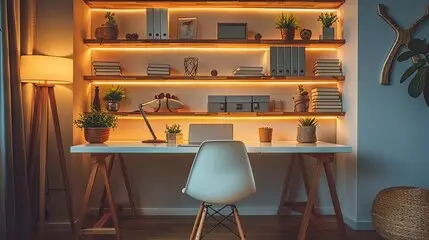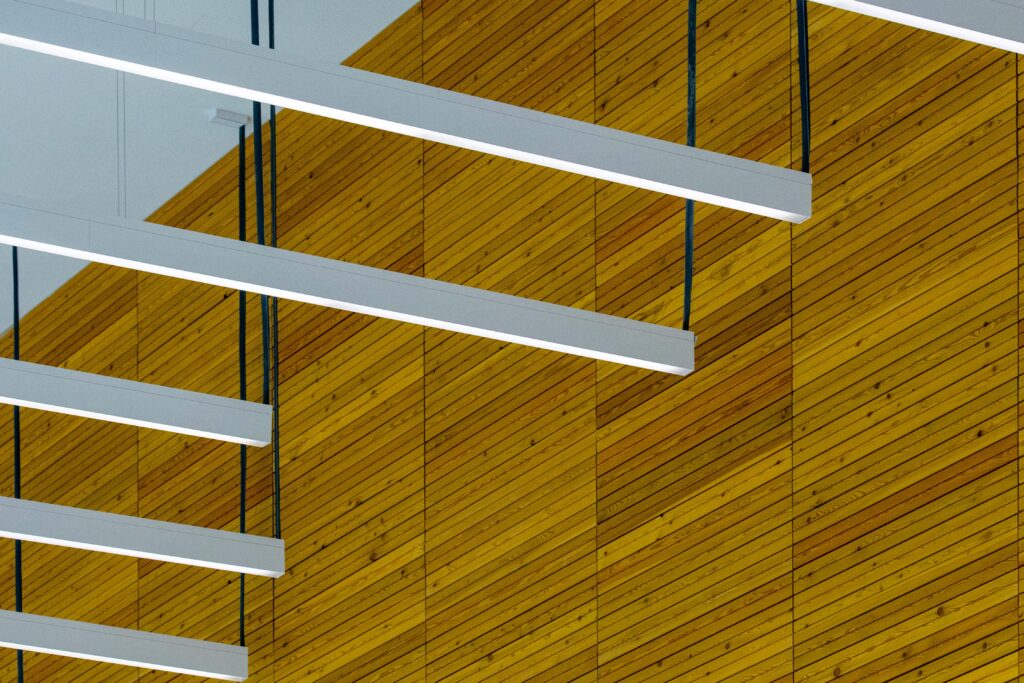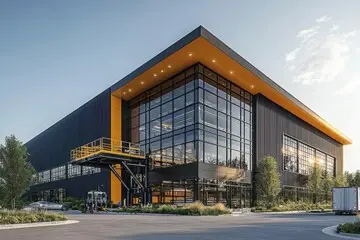How Strip Lighting for Workspaces Enhances Design and Productivity
Strip lighting for workspaces has become a key element in modern office and commercial lighting solutions. Businesses seeking an energy-efficient and customizable approach to lighting can greatly benefit from LED strip lights, which enhance both productivity and aesthetics. Whether used in offices, retail environments, or industrial settings, strip lighting provides a flexible and effective lighting solution that improves both visual comfort and workspace efficiency. This guide explores how strip lighting enhances workplace design and function, helping businesses create optimized environments that foster productivity and well-being.
Benefits of Strip Lighting for Workspaces
1. Enhanced Visual Comfort
- Provides uniform illumination, reducing glare and eye strain for employees.
- Helps create a well-lit environment that improves focus and reduces fatigue.
- Eliminates shadows and dark spots, ensuring even distribution of light across different workspace zones.
- Adjustable brightness levels and color temperatures help workers personalize their lighting experience for maximum comfort.
2. Energy Efficiency & Cost Savings
- LED strip lights consume up to 80% less energy than traditional fluorescent lights.
- Long lifespan (50,000+ hours) reduces maintenance and replacement costs.
- Smart lighting integration, such as motion sensors and dimming features, further optimizes energy savings.
- Lower heat output compared to incandescent or fluorescent bulbs reduces cooling costs, making them an ideal choice for sustainable workplaces.
3. Versatile Design & Customization
- Available in various color temperatures (warm to cool white) for different work environments.
- Dimmable and tunable options allow businesses to adjust brightness for different tasks and activities.
- Sleek and modern designs blend seamlessly into ceilings, desks, and shelving.
- Can be integrated into architectural elements, such as coves and accent lighting, to enhance workspace aesthetics and improve ambiance.
4. Improved Employee Productivity
- Proper lighting enhances alertness, mood, and overall work performance.
- Adjustable lighting settings can help reduce stress and increase motivation in office environments.
- Exposure to well-balanced, natural-like lighting reduces fatigue and enhances cognitive function.
- Employees working under optimized lighting conditions experience higher engagement and lower error rates.
Best Applications of Strip Lighting for Workspaces
1. Office Ceilings & Workstations
- Provides even and bright lighting without harsh shadows.
- Ideal for open office layouts, private workspaces, and collaborative areas.
- Enhances desk spaces with under-cabinet lighting for focused task work.
- Adjustable LED strips can be used in cubicles to create a more personalized lighting experience.
2. Conference Rooms & Meeting Areas
- Enhances presentation visibility and video conferencing quality.
- Customizable lighting options for different meeting atmospheres.
- Integration with smart lighting systems allows automatic adjustments based on room occupancy.
- Enhances collaboration spaces by providing balanced lighting that reduces screen glare and improves focus.
3. Retail & Showrooms
- Highlights product displays to attract customers and enhance visual merchandising.
- Creates an engaging, modern aesthetic that enhances branding and customer experience.
- LED strip lights can be installed in display cases, under shelving, and around signage to create dynamic lighting effects.
- Helps guide customer attention toward featured products, improving overall sales conversions.
4. Warehouse & Industrial Spaces
- Ensures clear visibility for safety and efficiency in large work environments.
- Motion-activated strip lighting reduces energy waste in rarely used areas.
- Provides high-lumen output lighting solutions for spaces requiring intense illumination, such as assembly lines and storage areas.
- Enhances worker safety by ensuring that pathways, stairwells, and hazardous areas remain well-lit at all times.
Selecting the Best Strip Lighting for Workspaces
When choosing strip lighting for commercial settings, consider:
- Brightness (Lumens): Ensure adequate light levels for task areas, general workspace illumination, and accent lighting.
- Color Temperature: Warmer tones (2700K-3000K) for relaxed spaces, cooler tones (4000K-5000K) for focus-intensive tasks and industrial areas.
- Dimmable Options: Allows flexibility in brightness control, enabling businesses to adapt lighting levels for different needs throughout the day.
- Smart Integration: Compatibility with automation systems for efficiency and convenience, including motion sensors and programmable settings.
- CRI (Color Rendering Index): Higher CRI (80-90+) ensures accurate color representation, which is essential for creative and design-focused workplaces.
- Ease of Installation: Choose options that suit workspace layouts, such as adhesive-backed strips, plug-and-play designs, or hardwired configurations for permanent setups.
Conclusion
Strip lighting for workspaces is a game-changer, offering a balance between design, functionality, and energy efficiency. Whether in offices, retail stores, or industrial settings, integrating LED strip lighting enhances both productivity and ambiance, making it a valuable investment for any commercial space. By choosing the right lighting specifications, businesses can create well-lit environments that improve employee well-being, enhance safety, and contribute to long-term energy savings. As modern workspaces continue to evolve, innovative lighting solutions like LED strip lighting remain an essential component of smart, sustainable workplace design.


